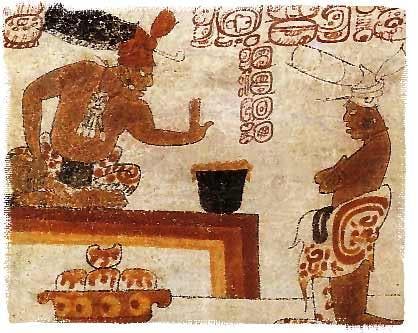Talk about black gold — chocolate was used as coin by the Maya people, and that may have a lot to do with the civilization’s decline.

At the height for their achievements, the Maya developed in an area that encompasses southeastern Mexico, all of Guatemala and Belize, and the western portions of Honduras and El Salvador. The culture is known for art, architecture, mathematics, calendar, and astronomical system, as well as its hieroglyphic script — the only known fully developed writing system of the pre-Columbian Americas. But we also owe something else to the Maya, something much more important in our day to day lives: chocolate.
The Maya elite prized chocolate, which they served as an unsweetened beverage. Spanish colonial accounts from the 16h century even mention that the Maya sometimes used cocoa beans — the basis for chocolate — as currency. But was this really the case?
To find out, Joanne Baron, an archaeologist with the Bard Early College Network, started analyzing Mayan artwork from about 250 C.E. to about 900 C.E. The objects she used — murals, ceramic paintings, and carvings — are a valuable source of information even when written accounts aren’t present.
She found that in the earliest periods, no mention of cocoa or chocolate as currency exists. The earliest reference of such goods being used for exchange comes from the mid-7th century: In a painted mural displayed in a pyramid near today’s Guatemalan border, a woman offers a bowl of hot chocolate to a man, in exchange for dough. However, this only shows that chocolate was being bartered — not that it was used as currency, Baron says.
However, things change from about 691 C.E. through 900 C.E. During this period, a number of artistic pieces show commodities delivered to Maya leaders as a tribute or tax. At some point, Mayan kings started receiving cacao and woven cloth as tax, showing that both had become a form of currency.
“They are collecting way more cacao than the palace actually consumes,” she says, adding that the surplus was probably used to pay palace workers or to buy things at the marketplace.
Since cocoa was universally loved by all Mayans, it makes a lot of sense. It’s not just that the drink was used in rituals and important ceremonies, but it was much more prized than maize since cacao trees are susceptible to crop failure and didn’t grow well near Maya cities.
Some researchers speculated that this may have caused significant problems — whenever there was a crop failure, it may have caused cascading economic problems. Baron’s research supports this idea, but while this would have been problematic, it’s unlikely that this was instrumental in the decline of the Maya. They used several types of currencies and would have likely been able to substitute one with the other.
The results have been published in Economic Anthropology.






